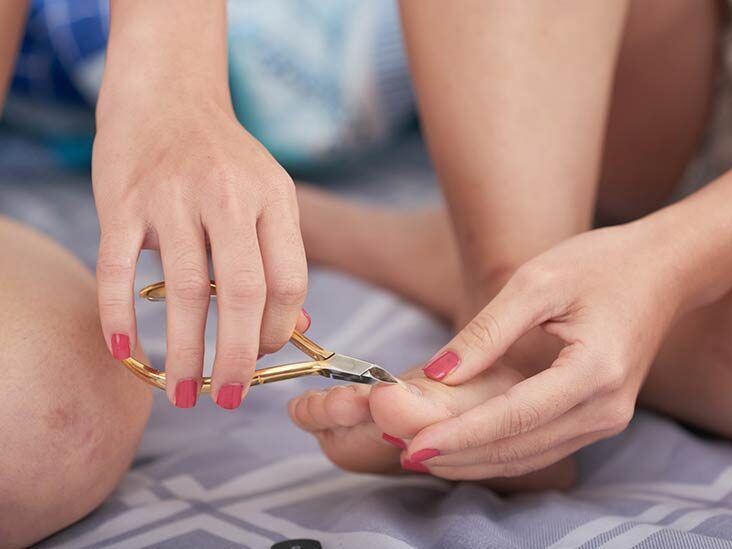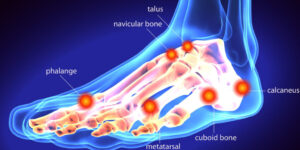This can cause discomfort, swelling, and sometimes even more serious issues if you don’t deal with it quickly. You know, like if you’ve ever had a toenail that just won’t stop bothering you? Yeah, that might be an ingrown toenail. Now, there are a few reasons why this happens. Sometimes it’s because we didn’t trim our nails properly, or maybe our shoes are just too tight. But get this, genetics can also play a part!
The good news is, there are things we can do to manage and prevent ingrown toenails. It’s all about knowing what to look out for and taking action when we need to. So, if you’re dealing with any discomfort or notice something not quite right with your toenails, don’t hesitate to reach out to a healthcare pro. They’ll help you get back on your feet in no time!
Stay healthy and keep those toes happy!
Key questions
Questions Addressed in the Text:
- Are recurring ingrown toenails common?;
- Do podiatrists use anesthetic when conducting ingrown nail treatment?;
- Are ingrown toenails hereditary?;
- How do I know if my toenail is ingrown?;
- Why are ingrown toenails so painful?;
- Can you cut an ingrown nail at home?;
- Should I cut my nails if they’re ingrown?;
- How do you draw out an ingrown nail?
Now let’s look at the answers to these questions sub-retrospectively.
Understanding Ingrown Toenails
Ingrown toenails occur when the edge or corner of a toenail grows into the skin surrounding the nail bed, causing pain, inflammation, and potential infection. They commonly affect the big toe but can occur on any toe. Understanding the causes, symptoms, and treatment options for ingrown toenails can help manage and prevent this condition.
The causes of ingrown toenails typically involve factors that either encourage the nail to grow into the surrounding skin or predispose individuals to this condition. Here are some common causes:
- Improper nail trimming: Cutting toenails too short or rounding the edges can encourage the nail to grow into the skin instead of growing straight out;
- Poorly fitting footwear: Shoes that are too tight or narrow can compress the toes, leading to pressure on the nails and encouraging them to grow into the skin;
- Toe trauma: Injury to the toe, such as stubbing it or dropping something heavy on it, can cause the nail to grow abnormally or become ingrown;
- Genetics: Some individuals may inherit a tendency for their nails to curve inward more than usual, making them more prone to ingrown toenails;
- Abnormal nail shape: Nails that naturally curve or are unusually thick may be more likely to become ingrown;
- Excessive sweating: Sweaty feet can soften the skin around the nail, making it easier for the nail to penetrate the skin;
- Poor foot hygiene: Inadequate foot hygiene can increase the risk of bacterial or fungal infections, which can contribute to ingrown toenails;
- Foot deformities: Certain foot deformities, such as bunions or hammertoes, can alter the mechanics of the foot and increase pressure on the toes, potentially leading to ingrown toenails.
Understanding these causes can help individuals take preventive measures to reduce their risk of developing ingrown toenails. Proper nail care, wearing comfortable footwear, and maintaining good foot hygiene are essential steps in prevention.
How to cut ingrown toenails?
Cutting ingrown toenails requires careful attention to avoid worsening the condition or causing injury. Here’s a step-by-step guide on how to cut ingrown toenails safely:
- Soak the foot: Soak your foot in warm, soapy water for about 15-20 minutes to soften the toenail and the surrounding skin. This will help reduce pain and make it easier to trim the nail.
- Clean the toe: Use a mild soap and water to clean the affected toe and surrounding area thoroughly. This helps reduce the risk of infection.
- Trim the nail straight across: Using clean and sanitized nail clippers, carefully trim the ingrown toenail straight across. Avoid rounding the corners or cutting the nail too short, as this can increase the likelihood of the nail growing into the skin again.
- File the edges: Gently file the edges of the toenail with a nail file to smooth any rough or sharp edges. This helps prevent the nail from catching on socks or footwear.
- Avoid cutting into the corners: Be cautious not to cut into the corners of the nail or trim it too deeply, as this can increase the risk of ingrown toenails or cause pain and bleeding.
- Apply an antiseptic: After trimming the nail, apply an antiseptic solution or ointment to the affected area to reduce the risk of infection.
- Use sterile instruments: Ensure that the nail clippers and any other tools used for cutting and trimming the toenail are clean and sterile to prevent the spread of bacteria or infection.
- Seek professional help if needed: If you’re unsure about trimming your ingrown toenail or if it’s causing severe pain, redness, or signs of infection, it’s best to seek help from a healthcare professional. They can provide proper treatment and guidance tailored to your specific situation.
It’s essential to be gentle and careful when cutting ingrown toenails to avoid making the condition worse or causing injury. If you’re unable to trim the nail safely on your own, don’t hesitate to seek assistance from a podiatrist or healthcare provider.
Tips to prevent an ingrown toenail
Preventing ingrown toenails involves practicing good foot hygiene and adopting habits that promote healthy nail growth. Here are some tips to help prevent ingrown toenails:
- Proper nail trimming: Trim your toenails straight across, avoiding rounded edges. Cutting nails too short or rounding the corners increases the likelihood of ingrown toenails.
- Don’t trim nails too short: Keep your toenails at a moderate length, neither too short nor too long. Cutting nails too short can cause them to grow into the skin.
- Wear properly fitting shoes: Choose shoes that provide enough room for your toes to move comfortably. Tight-fitting or narrow shoes can exert pressure on the toes, leading to ingrown toenails.
- Avoid tight socks: Wear socks that are not too tight around the toes. Tight socks can compress the toes and contribute to ingrown toenails.
- Protect your feet from injury: Be cautious to avoid injuring your toes, such as stubbing them or dropping heavy objects on them. Trauma to the toes can lead to ingrown toenails.
- Maintain good foot hygiene: Keep your feet clean and dry, especially between the toes. Moisture can soften the skin around the nails, making them more prone to ingrown toenails.
- Wear protective footwear in hazardous environments: If you work in environments where your feet are at risk of injury, such as construction sites or workshops, wear protective footwear to prevent toe trauma.
- Trim nails after bathing: Nails are softer after bathing, making them easier to trim. Soak your feet in warm water for a few minutes before trimming your nails.
- Avoid picking at your nails: Resist the urge to pick at or tear your toenails, as this can damage the nail and surrounding skin, increasing the risk of ingrown toenails.
- Maintain a healthy diet: A balanced diet rich in nutrients, particularly vitamins and minerals like calcium and vitamin D, can promote healthy nail growth.
By following these tips and practicing good foot care habits, you can reduce your risk of developing ingrown toenails and keep your feet healthy. If you have recurrent ingrown toenails or are unsure how to properly care for your nails, consult a podiatrist or healthcare provider for guidance.
Conclusions
Simple habits can make a big difference here. Keeping your feet clean, wearing comfy shoes that actually fit, and trimming your toenails the right way can help prevent ingrown toenails from cropping up.
And here’s the thing: if you do start feeling any pain, notice redness, or see swelling around your toenails, don’t wait around! Reach out to a podiatrist or healthcare provider pronto. Getting help early can nip any potential complications in the bud and keep your feet feeling happy and healthy.
So, while dealing with ingrown toenails might not be the most fun, staying on top of your foot care routine and seeking professional help when needed can keep you walking on sunshine.


